Brecciated Agate or Ruined
Descriptive term, used by Bauer (1896, p. 513) to describe shattered and recemented agate from Saxony, Germany. Zeitner (1964, p. 349) suggested the term brecciated be used for faulted agates in which the fragments were displaced and re-cemented out of their original position. See also ruin agate. We have observed many brecciated agates from the Ogalalla Formation of Miocene/Pliocene Age in Nebraska where included angular fragments of agate have originated from pedogenic (soil forming) processes rather than structural movement. Further, we have observed nodular agates with brecciation only happening to bands deep in the interior, suggesting the fracturing was not due to fault movement.
The broken banding in the example from the Sierra del Gallego area in Northern Mexico (first image) that is illustrated here may have resulted from shrinkage fractures in the agate during syneresis (hardening). The example in the second image is from Casas Grande, Chihuahua, Mexico, and the damage has been caused by a fault-like movement taking place along adjacent bands. One can observe the brecciated (broken up) structure of the bands. Also, note that the large group of quartz crystals in the hollow center of the agate appear to be a collapse structure in which the crystals fell from the ceiling of the void when movement and fracturing took place.
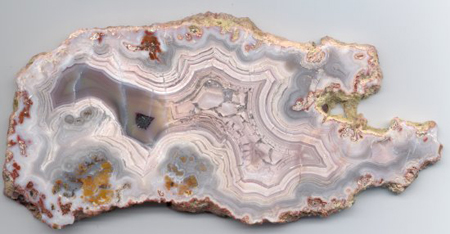
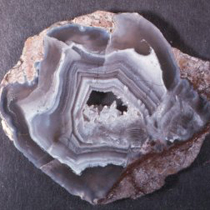
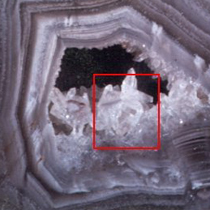
Chromatograph
Chromatographs form when the fine spherulitic crystals of the agate serve as a permeable membrane. The term as it is applied to coloration of agates may have first appeared in Pabian (1978). The chromatograph forms when water solutions with dissolved minerals move through the finely crystalline structure and the larger ions are separated near the source of flow and the smaller ions continue moving until they are trapped or until there is not sufficient energy in the water flow to keep them suspended. This structure can be duplicated with filter papers and food coloring and is a classical high school chemistry experiment.
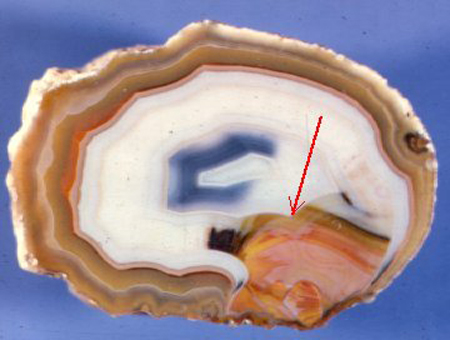
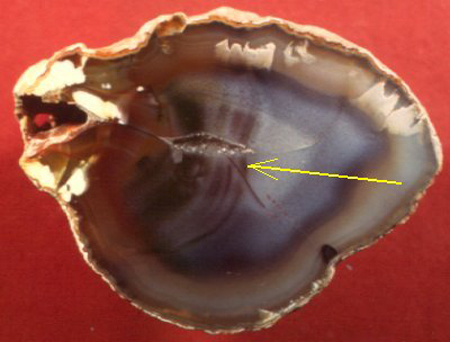
Dilation
Dilation refers to an expansion in escape tube of a banded agate. The term was probably first used by Heddle (1899) and later, by Macpherson (1989) for structures observed in agates from lavas associated with the Old Red Sandstone of Devonian age. The dilation probably results from a decrease in pressure toward the exterior of an agate nodule when silica is being forced from the interior of the agate through the escape tube before crystallization takes place. Specimen is from rocks mapped as Upper Cenozoic volcanics by Sanchez-Mejorada (1960) that are exposed near Casas Grande, Chihuahua, Mexico.
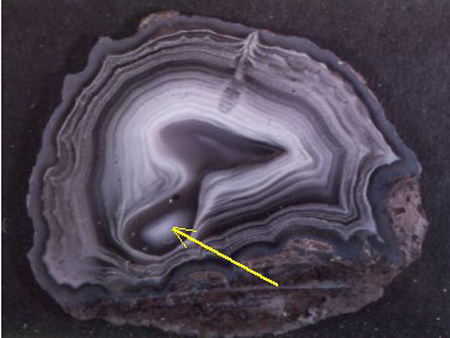
Faulted Agate
Faults form when there is rupture and movement that displaces formerly adjacent beds of rock. This example of fracture and subsequent displacement of adjacent bands in an agate nodule was brought to our attention by the late Charlie Bass of Jay Em, Wyoming. The agate was collected by Bass from marine sedimentary limestone of middle to late Pennsylvanian age that are exposed along the North Platte River near Guernsey, Wyoming.
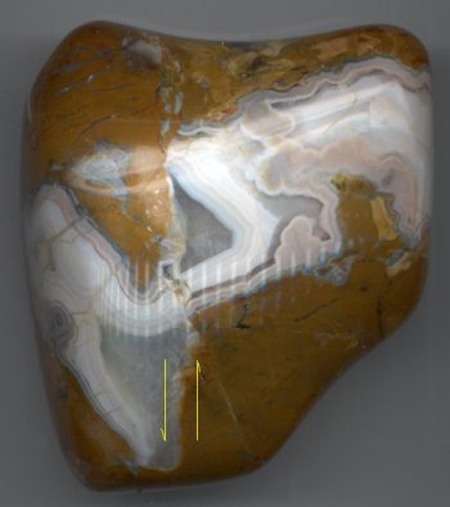
Pistolites
Pisolites are features that are associated with soil formational processes. Pisolites in agates may have been first documented by Pabian (1978). Pisolites form about a nucleus when mineral saturated waters periodically flush out cavities in which the pisolites form. Pisolites grow from the inside out and they may have a number of different textures such as radial, globular collimorphic, etc. that were recorded in materials from Russia by Lebedev ([1965, Russian; (1967 English Translation)].
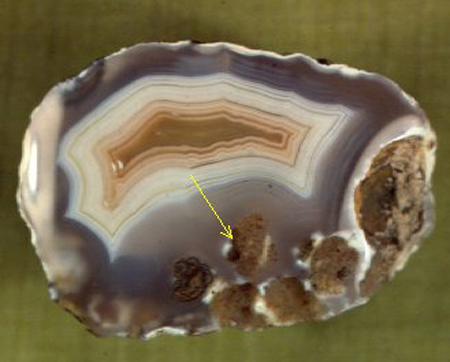
Pseudomorphs
Pseudomorphs are crystals of one mineral that have been completely replaced by a second mineral. Usually, a more soluble (anhydrite, upper specimen; calcite, lower specimen) mineral will be replaced by a less soluble mineral.
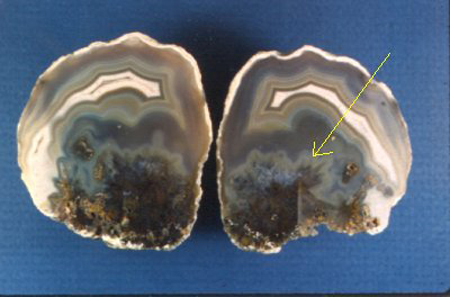
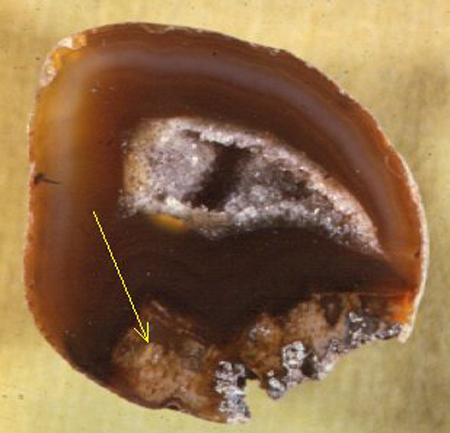
Tube Agates
Tube Agates form when banded agate is deposited around an elongated nucleus such as a needle-like crystal of goethite or rutile. These are sometimes incorrectly called eye agates, a term that should probably be reserved for hemispheres of banded agate that form with their outer surface pointing toward the interior of the agate nodule.
